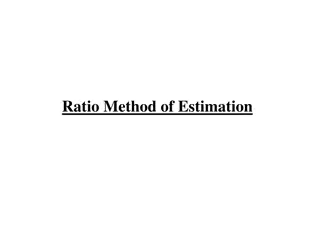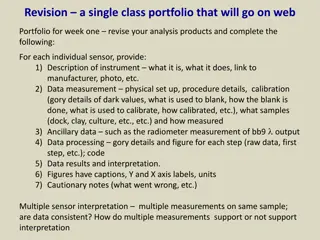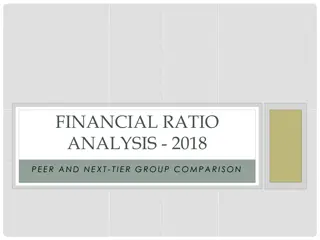Understanding Financial Ratio Analysis: Meaning, Interpretation, and Applications
Financial ratio analysis involves interpreting ratios such as single absolute ratios, group of ratios, historical comparisons, projected ratios, and inter-firm comparisons to evaluate a company's financial performance and position. By comparing current ratios to past data or industry standards, organizations can make informed decisions and take corrective actions for improvement.
Download Presentation

Please find below an Image/Link to download the presentation.
The content on the website is provided AS IS for your information and personal use only. It may not be sold, licensed, or shared on other websites without obtaining consent from the author. Download presentation by click this link. If you encounter any issues during the download, it is possible that the publisher has removed the file from their server.
E N D
Presentation Transcript
Ratio: Meaning, Interpretation, Guidelines and Classification M.KATAPPA
The interpretation of the ratios can be made in the following ways: Single Absolute Ratio: Generally speaking one cannot draw any meaningful conclusion when a single ratio is considered in isolation. But single ratios may be studied in relation to certain rules of thumb which are based upon well proven conventions as for example 2: 1 is considered to be a good ratio for current assets to current liabilities.
Group of Ratios: Ratios may be interpreted by calculating a group of related ratios. A single ratio supported by other related additional ratios becomes more understandable and meaningful. For example, the ratio of current assets to current liabilities may be supported by the ratio of liquid assets to liquid liabilities to draw more dependable conclusions.
Historical Comparison: One of the easiest and most popular ways of evaluating the performance of the firm is to compare its present ratios with the past ratios called comparison overtime. When financial ratios are compared over a period of time, it gives an indication of the direction of change and reflects whether the firm s performance and financial position has improved, deteriorated or remained constant over a period of time. But while interpreting ratios from comparison over time, one has to be careful about the changes, if any, in the firm s policies and accounting procedures.
Projected Ratios Ratios can also be calculated for future standards based upon the projected or proforma financial statements. These future ratios may be taken as standard for comparison and the ratios calculated on actual financial statements can be compared with the standard ratios to find out variances, if any. Such variances help in interpreting and taking corrective action for improvement in future.
Inter-Firm Comparison: Ratios of one firm can also be compared with the ratios of some other selected firms in the same industry at the same point of time. This kind of comparison helps in evaluating relative financial position and performance of the firm. But while making use of such comparison one has to be very careful regarding the different accounting methods, policies and procedures adopted by different firms.























